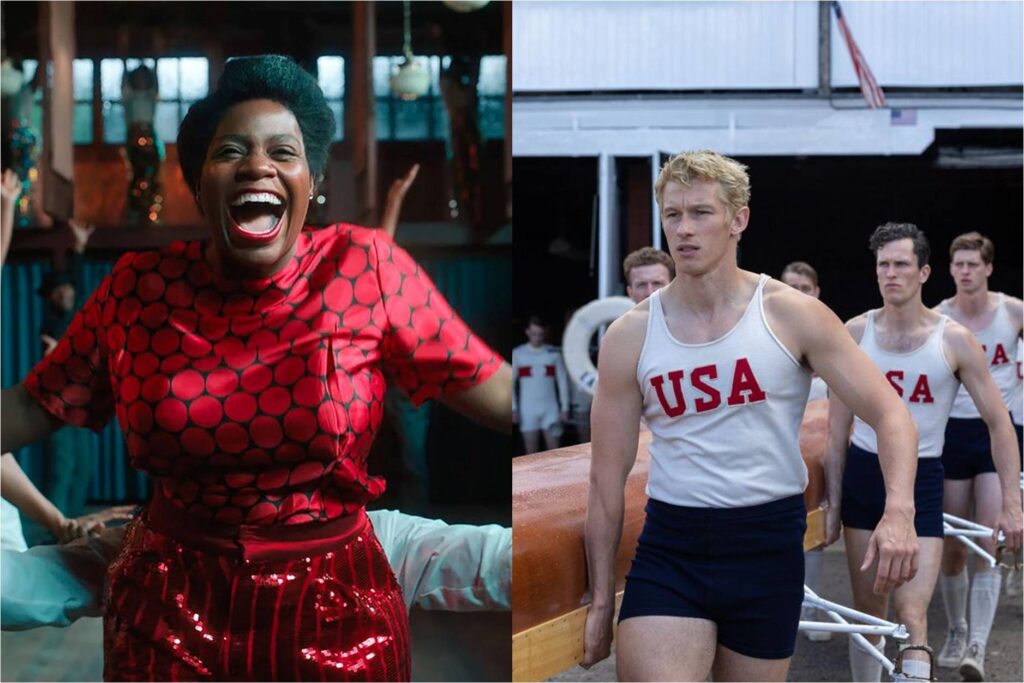
In critical circles, the term “middlebrow” is wielded as a pejorative, alongside “prestige fare” and “Oscar bait.” The idea is that these types of films—often period pieces, featuring inspirational stories that are based on either historical events or popular novels—are tasteful to the point of decorousness, flattering Academy voters for their refinement without taking real risks as works of cinema. As someone who spent his formative years greedily devouring as many Oscar winners as possible, I maintain a steadfast appreciation for the middlebrow picture; I like The Cider House Rules, I love A Beautiful Mind, and I think Kate Winslet was terrific in both Revolutionary Road and The Reader. That a movie attempts to appeal to a broad adult audience doesn’t automatically nullify its pleasures, especially when it’s well-made and well-acted (and sure, gorgeous period costumes can’t hurt).
Christmas tends to be an ideal time for the release of a middlebrow movie, given that the holiday affords extended families the opportunity to spend two-plus hours in a climate-controlled environment without offending any sensibilities. In recent years, sterling examples of this vintage include Little Women, Mary Queen of Scots, and other period pieces that didn’t star Saoirse Ronan (e.g., Fences). Quality prestige pictures, all! Still, just as I reject the notion that middlebrow flicks are inherently inferior, I also acknowledge that they aren’t intrinsically superior; they still need to work on the levels of storytelling and aesthetics. Along with the Michael Mann biopic Ferrari (which I previously reviewed here), this Christmas brought the arrival of two films that seemed like easy wins for prestige-hungry audiences. But despite their differences in tone and scope, they share a sense of failure—both to inspire and, more crucially, to entertain.
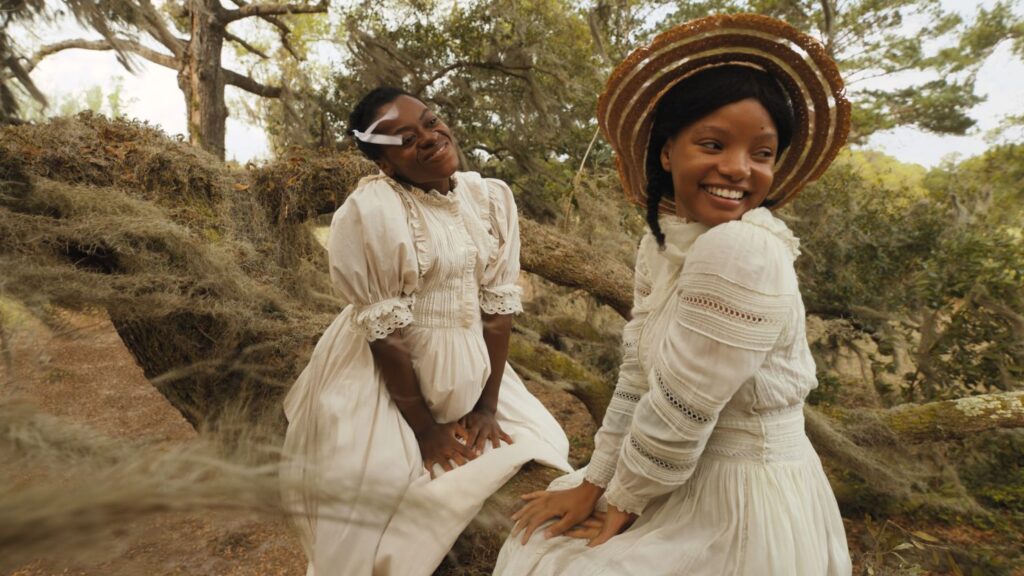
Of the two, The Color Purple is the less egregious, in part because its intentions are unimpeachable. Based on a novel by Alice Walker, it was previously turned into a forceful, crowd-pleasing drama by none other than Steven Spielberg, a piece of impressive adaptation that also happened to involve a white man directing a seminal story of Black women. I’m not so facile as to argue that only Black artists should be “allowed” to make movies about Black characters (and I certainly wouldn’t make the reverse claim about white directors, which would be a false equivalence in any event), but The Color Purple still remains a sensible candidate for a revival with Black people behind the camera as well as in front of it. That candidacy is reinforced with the recognition that this new picture, which was directed by Blitz Bazawule from a screenplay by Marcus Gardley, is an adaptation of both Walker’s novel and the Broadway musical that premiered on Broadway in 2005, obviating the usual concerns about creative redundancy.
Yet while the existence of this Color Purple is laudable, its execution is another matter. As a musical, it never finds its rhythm. There are a few moments of visual ingenuity: percussion that claps in time with a chain gang’s thumping mallets, a serenade that envisions its participants dancing in the center of a giant vinyl record. For the most part, though, the choreography here is stiff and staid, lacking in imagination or verve. The staging isn’t exactly theatrical—you can’t accuse Bazawule of helming a filmed play—but it never justifies its own lyrical conceit.
This means that our attention falls to the story, which is, well, fine. Walker’s novel (which I’ve not read) follows the tribulations of Celie (Fantasia Barrino), a Black woman in the Jim Crow South who is essentially an indentured servant to her loathsome husband, Mister (Colman Domingo). The plot spans four decades, beginning as a ghastly tale of anguish and abuse before gradually transforming into a narrative of perseverance and redemption. Bazawule dramatizes the central episodes dutifully, but without the requisite detail or clarity. As a result, while the movie should glide along its predetermined path, its trajectory instead feels herky-jerky, lurching from ghoulish miserabilism to sudden jubilation. Part of the problem is that Celie is a fundamentally passive character, and Barrino—a musician making her feature debut (she played the same part on stage)—lacks the expressiveness to convey her inner torment and triumph.
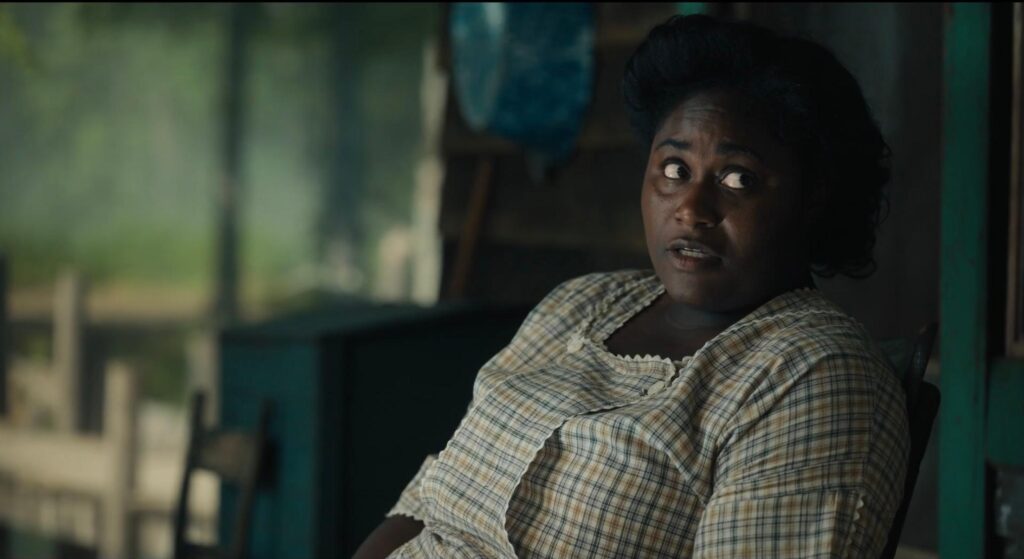
That isn’t true of Danielle Brooks, the Orange Is the New Black star who thunders into the movie as a no-nonsense woman named Sofia and instantly supplies it with a jolt of much-needed electricity. Sofia isn’t any more fully developed than the other characters—Taraji P. Henson is affecting as a starry-eyed jazz singer, while Corey Hawkins is hamstrung as Mister’s diffident son—but Brooks’ natural charisma and vibrant exuberance make her larger than life, even if she’s also entirely credible. When she’s on screen, the movie sings.
On the whole, The Color Purple aspires to a piece of gospel, lifting us up with its soulful depiction of human decency and endurance. It’s a noble goal, but Bazawule’s filmmaking is too tentative and respectful for the movie to unshackle itself from its literary bona fides. It’s an honorable picture that doesn’t have nearly enough color.
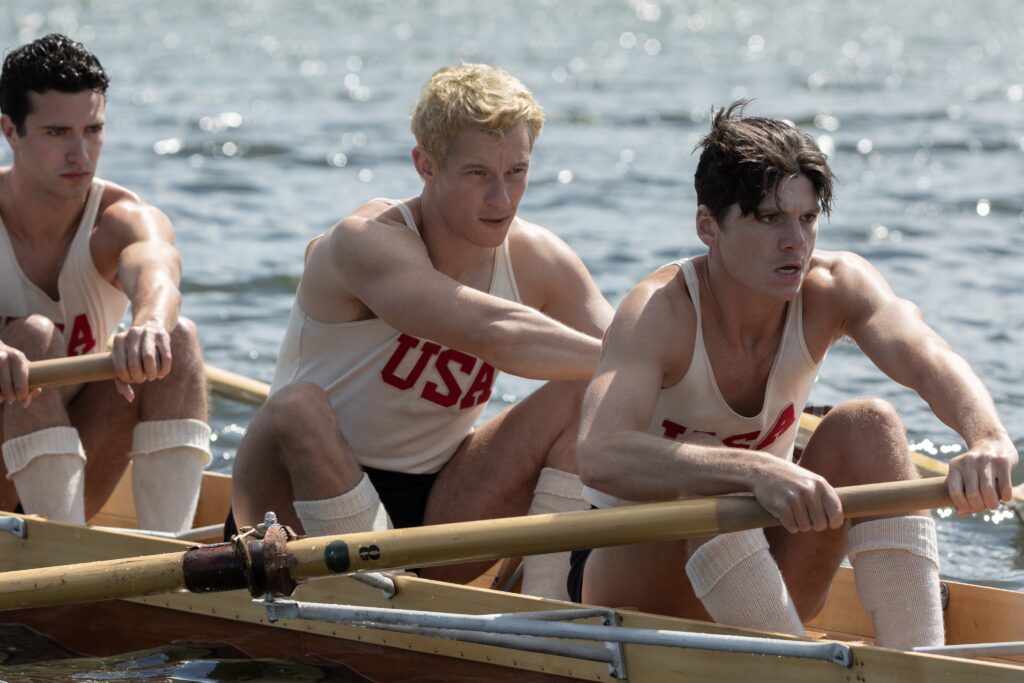
Speaking of which, it’s somewhat surprising that The Boys in the Boat wasn’t shot in black-and-white, given its desire to call back to the classics of a different cinematic era. This isn’t unusual for George Clooney, whose career as a director has been defined primarily by nostalgia—a yearning for yesteryear that he sometimes interrogates thoughtfully (as in Good Night and Good Luck) but which more often overwhelms his material (as in Leatherheads, a putative homage to screwball comedy that featured neither screwball nor comedy, or The Monuments Men, a faux platoon epic about the military retrieving stolen art from Nazi Germany). Here he has applied his orthodox preferences to the sports movie, attempting to spin a historical anecdote of masculine pluck into a stirring drama of Oscar gold.
Conceptually, The Boys in the Boat is perfectly sensible. Based on a book by Daniel James Brown (the screenplay is by Mark L. Smith, who also penned The Revenant and Clooney’s underrated Midnight Sky), it tells the story of the University of Washington’s junior-varsity rowing team and their improbable run (cruise?) to the 1936 Olympics in Berlin. As befits the movie’s lofty ambitions, Clooney has outfitted it with elegant, ornamental craft: The cinematography, by Martin Ruhe, carries a sepia quality that suggests the morning fog lifting off the Pacific; the score, by Alexandre Desplat, is alternately delicate and sonorous.
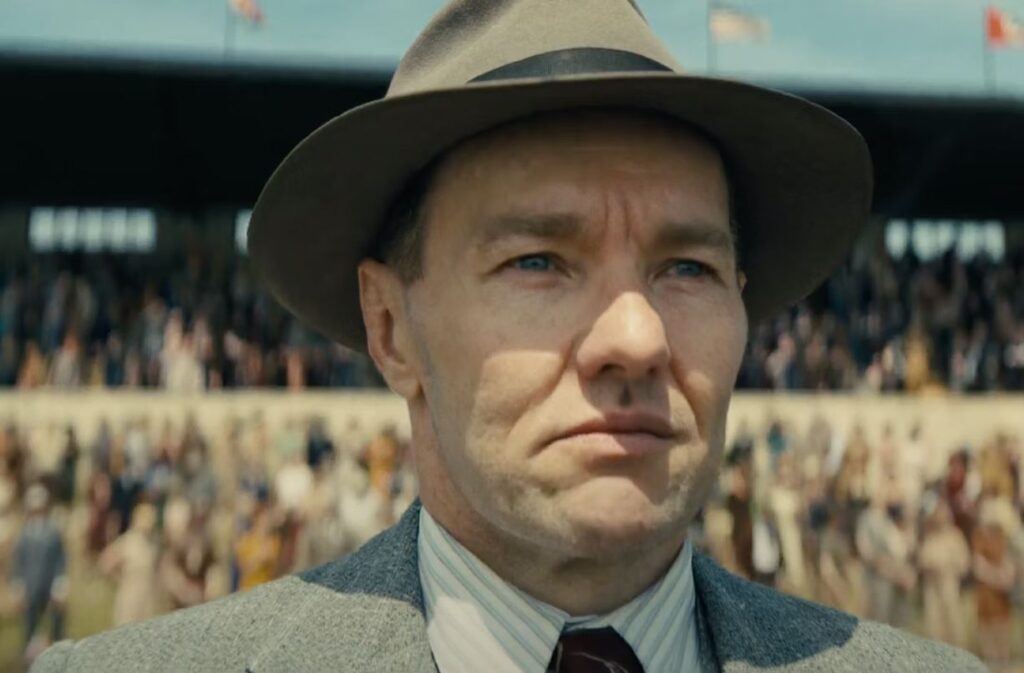
What Clooney does not do—what he appears entirely indifferent to even trying to do—is infuse the movie with memorable characters or emotional realism. Its nominal hero is Joe Rantz (Callum Turner), a hardscrabble engineering student who tries out for the crew in the hope that a potential stipend will allow him to scrape up next semester’s tuition. Rantz’s blue-collar ruggedness finds a match in the team’s coach, Al Ulbrickson (Joel Edgerton), the kind of down-to-earth mentor who groans about Ivy League superiority and is constantly fending off interference from nosy, out-of-touch bureaucrats.
There’s possibility here—the saga of two unappreciated men collaborating to overcome the odds and vanquish their own demons. But Rantz and Ulbrickson are archetypes, not people. (It doesn’t help that Turner invests Rantz with all of the magnetism of a block of wood.) In fact, nobody in this movie feels like a person: not the strapping star athlete (Jack Mulhern) whose ostensible defining trait is the ability to play the piano, not the scrappy coxswain (Luke Slattery) who yells a lot, and not Rantz’s absent father (Alec Newman), who abandoned him as a teenager only to magically return in one of the film’s most laughable grasps for your heartstrings.
And certainly not Rantz’s love interest, Joyce (Hadley Robinson, recently seen in Anyone But You), the blond babe who provides the movie with its sought-after link to Hays Code romances. In the narrow vision of The Boys in the Boat, Joyce is the ideal girlfriend: beautiful, available, and ceaselessly supportive of her man. She has no apparent life of her own; she exists solely to cheer Rantz on.
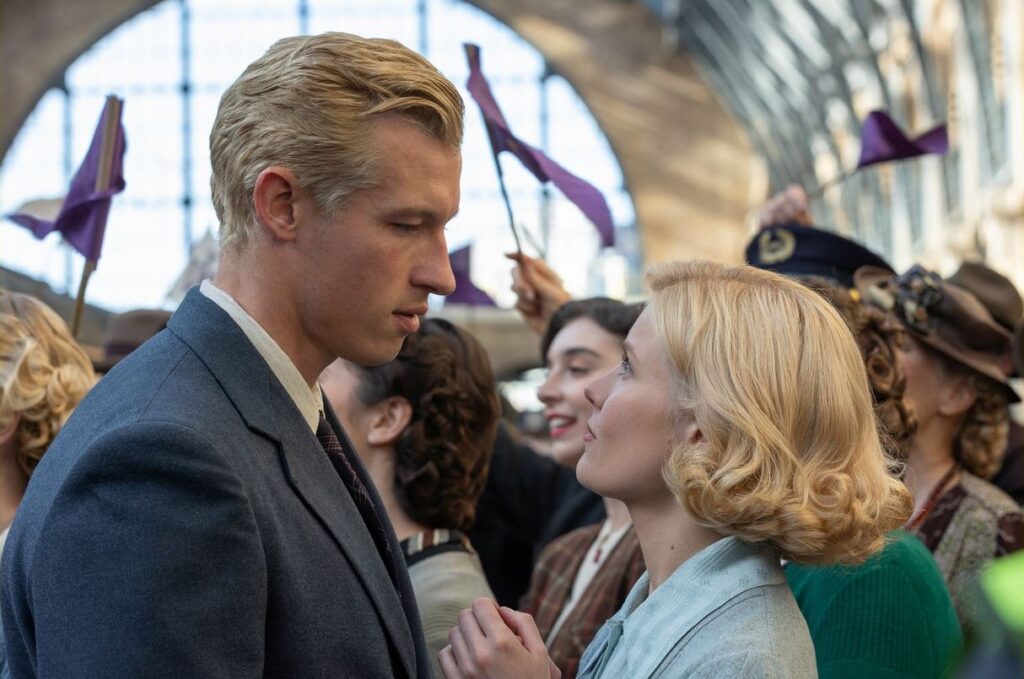
Which, I suppose, is why we’re all here. The dramatic shortcomings of The Boys in the Boat might be forgivable if its set pieces were more dynamic. But despite some platitudinous natter about teamwork, the movie can’t evade the simple truth: Watching people row canoes is boring. Clooney tries to compensate for this debilitating fact via frenetic editing and breathless exposition—cue the commentators constantly informing us exactly how many lengths our heroes are behind—but he can’t manufacture excitement from oars sliding into water.
The Boys in the Boat may strive to recall the cinema of the 1940s, but the movie it most obviously evokes is far more recent: 2003’s Seabiscuit, which chronicled the galvanizing exploits of an undersized racehorse. That happens to be one of this critic’s favorite middlebrow pictures, given its ambitious marriage of Depression-era misery and athletic majesty. The Boys in the Boat fails on both counts; beyond its feeble racing scenes, it proves woefully inadequate as a portrait of simmering global unrest. (This is the kind of film where one of the crew says to a good-looking Black lad at the Games, “You’re Jesse, Jesse Owens, right?”) In his desperate bid to conjure memories of older, better movies, Clooney has drowned this one in lachrymose hokum. He should have known better. If you load an enterprise with so much pious solemnity, you can hardly be surprised when it sinks.
Grades
The Color Purple: C+
The Boys in the Boat: C-
Jeremy Beck is the editor-in-chief of MovieManifesto. He watches more movies and television than he probably should.
